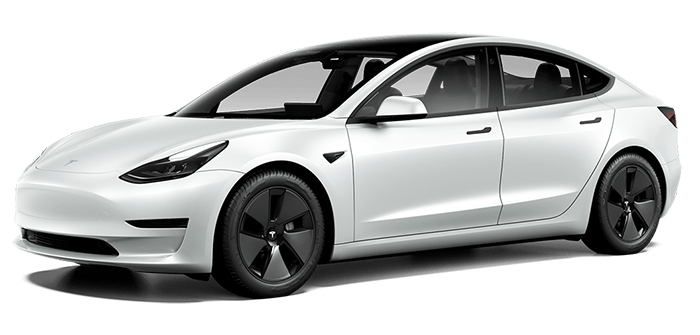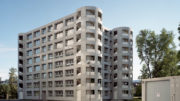Here’s one that comes from our social media followers. I was asked if weBoost’s cell phone signal boosters work with a Tesla Model 3. Chances are by now you’ve heard of the Tesla Model 3. It was originally promoted as a $35,000 electric car. Its popularity blossomed, especially in the west where gas prices are over $6.50 a gallon as I write this. Unfortunately, the price blossomed too, with the least expensive Model 3 now costing over $46,000. Still, they’re flying out of showrooms as fast as they can be made.
When the Model 3 was first announced in 2017, its all-glass roof set it apart from practically any other car. However, a lot of other manufacturers now offer all-glass roofs. People like them. It’s also possible to make them just as strong and safe as steel.
But, getting back to cell boosters…
Normally when people install a vehicle cell booster, they put the outer antenna on the highest point of the car. Obviously this is going to be the roof, right? However, most of these antennas are magnetic. That’s one problem. The other problem is that a glass roof lets in a lot more radiation than a metal one. That could mean potential problems depending on where the indoor antenna is. If the outdoor antenna can get transmissions directly from the indoor antenna, there’s a potential for a feedback loop. Modern cell boosters automatically reduce power to avoid this sort of thing. So, if the two antennas start feeding back, you could lose some or all of the boost you should be getting.
I decided to find out whether or not this was a problem with some real world testing. Luckily I happened to have a weBoost Drive Reach on my test bench, and I was lucky enough to get access to a Tesla Model 3. The third piece of the puzzle is the Wilson Cell Linq signal meter system which I also happened to have on the bench. I wanted to know how much impact the glass roof would have on an outdoor antenna.
Control testing
The first thing I did was test the performance of the Drive Reach in a midsize car with no glass roof. There were no shortage of those to choose from. Placing the outdoor antenna on the top of the metal roof, I then placed the indoor antenna in the center console and tested signals from one foot away. The one foot number is arbitrary, you can test from any distance as long as you’re consistent.
I observed exactly what I expected: 20dB average boost in both RSSI and RSRP. That’s consistent with the test results I’ve gotten from other tests with this booster in this same location.
An increase of 20dB is going to make the difference between a missed call and a call you don’t miss. It’s also going to be the difference between frustratingly slow internet and acceptably fast. That’s what a booster is supposed to do.
Instrumented testing
I then put the Tesla in the same spot and tried to duplicate the exact same conditions. The center stack of a Tesla is a little different, but I was able to come pretty close to my testing parameters.
My first result proved the point real quick. Plugging in the booster gave me a solid red light, indicating a feedback condition. The booster was providing essentially no boost since the two antennas could “see” each other through the glass. That proved that yes, there is a problem putting a cell booster’s antenna on a glass roof.
I then put the outdoor antenna on the top of the Tesla’s trunk lid. Obviously this was a less desirable location, since it’s not at the top of the vehicle. However, I got a green light on the booster so I set out to discover exactly how much of a problem it was going to be.
I was surprised that the average boost was 19dB, only a little below the previous test and within the margin of error. After checking cell sites I did see that some of the towers were being blocked by the car, but some weren’t.
The answer here is that putting the booster’s antenna on the trunk didn’t hurt performance as much as I thought. It’s possible that the Tesla’s nearly all-glass cab was letting a lot of signals through.
Great power, and social responsibility
So, the answer here is, if you have a Tesla, you can feel good about saving the environment from excessive fossil fuel consumption. You can also feel great about getting a strong, powerful connection by using a cell phone signal booster. Of course, if you really want that winning feeling, you’ll shop at Solid Signal where you can find the best selection and best prices on all our cell phone signal boosters. You’ll also find a ton of other stuff to help you live your best digital life.





